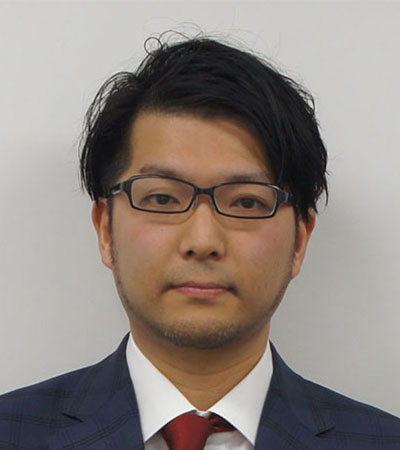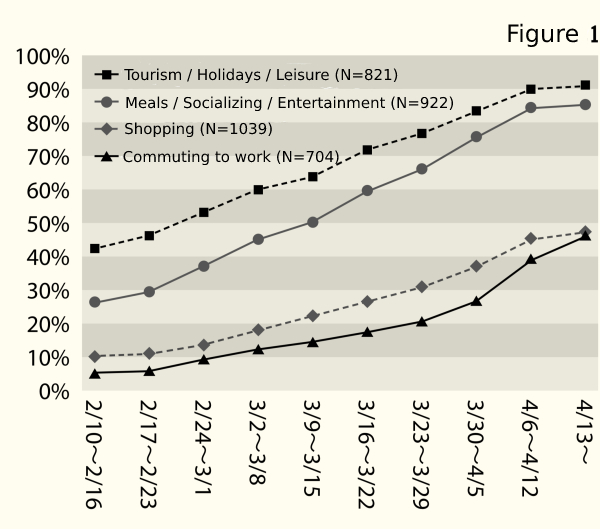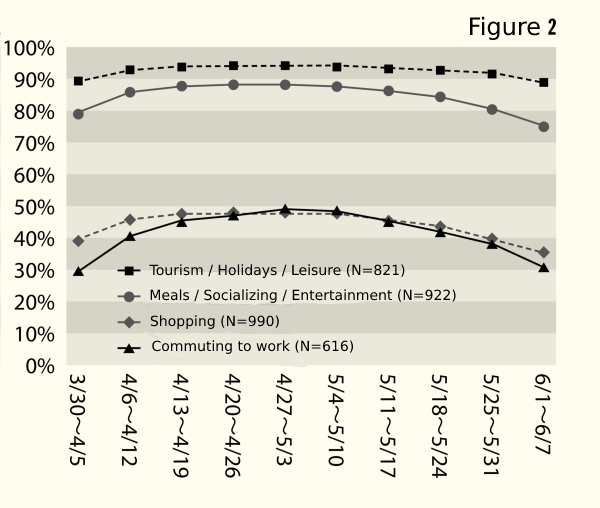How much of an effect did the declared state of emergency have on keeping people at home?

Dispatches from the coronavirus crisis
We selected 10 researchers from among the University of Tokyo’s 26 constituent departments and asked them to write one-page accounts of the coronavirus pandemic from the perspective of their own field of specialization. This also presented the opportunity for them to attempt to frame their own research through the lens of the pandemic.
What were UTokyo researchers thinking and feeling in the summer of 2020? What do researchers say when they are talking about the pandemic? Some answers to these questions will be found in this series of pages.

How much of an effect did the declared state of emergency have on keeping people at home?

Urban Disaster Mitigation
Associate Professor at the Graduate School of Engineering
In February 2020, I received a request from someone related to an academic association to consider projections for lockdowns (i.e., city blockades) and a plausible worst-case scenario for Japan. Lockdowns, which seek to flatten the rising infection curve and prevent the overloading of medical systems, had been carried out in countries overseas where the number of infections had increased, in the form of restrictions on public transportation and penalties for those who left their homes unnecessarily. Meanwhile, in Japan, a state of emergency was declared on April 7, affecting seven prefectures. In contrast with the social control-like restrictions on movement imposed in other countries, this non-binding request for self-restraint encouraged the Japanese public to exercise their own judgement not only with regard to their own potential infection, but also in terms of an altruistic concern for others. This approach was thus similar to various responses that have been undertaken in the past as disaster countermeasures, such as planned mass transit hiatuses that partially suspended certain social functions and the provision of accommodations for people who faced difficulties returning to their homes, which prevented the occurrence of overcrowded spaces and avoided obstructing the operation of emergency vehicles.
Using mobile data and social surveys, I analyzed how these responses, which we might call “Japanese-style lockdowns,” changed the way citizens refrained from leaving their homes and behaved so as to avoid contact. For example, in a social survey that I carried out on two occasions, it was shown that the declared state of emergency differed from the lockdowns imposed in other countries in that the declaration was not so extreme that people suddenly refrained from leaving home after the declaration. The figures show changes in the frequency with which people left their homes, broken down by reason, in the seven prefectures noted above. We find that many people were already refraining from going out for private purposes before the declaration was issued, as well as the fact that while the declaration was in force, for example, people’s restraint at leaving their homes to go to work remained relatively flat at about 40 to 50 percent, with a gradual rise in people leaving their homes beginning from mid-May onward. Including also the fact that the peak value for the effective reproduction number (R) nationwide occurred prior to the declaration of emergency, the decrease in the number of new infections in the first half of 2020 might more accurately be seen as due to a holistic effect from a number of factors, rather than an isolated effect of the declared state of emergency. In part, these factors include the point that, because their risk awareness was already heightened, many people were already staying at home prior to the declaration (although the declaration did specifically encourage refraining from going out for the purpose of commuting to work) and that they continued to do so, as well as the cluster countermeasures that had been ongoing since the early stages of the outbreak, and the practice of “new lifestyles.” In other words, the results suggest that the declared state of emergency was not necessarily a panacea that curbed the spread of infections on its own, but rather needed to be implemented in tandem with other measures such as raising the public’s awareness of risk, making evaluation of the merits of the declaration itself difficult, unlike in the case of other countries.
Presumably, the restrictions on going out attributable to the declared state of emergency also had a major impact on Japan’s economy and household budgets. The fact that the impact of disasters is greatest on society’s most vulnerable is widely known in disaster studies. It thus seems highly likely that the various issues made newly apparent by the current coronavirus pandemic are in fact issues that have existed as latent but deeply rooted aspects of our own society. With respect to these issues, I feel that we need to go beyond measures and remedies intended solely as a response to COVID-19 in order to solve more fundamental challenges.


* This article was originally printed in Tansei 41 (Japanese language only). All information in this article is as of September 2020.






